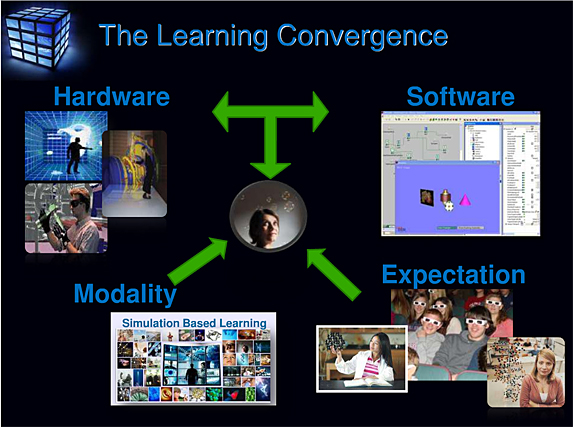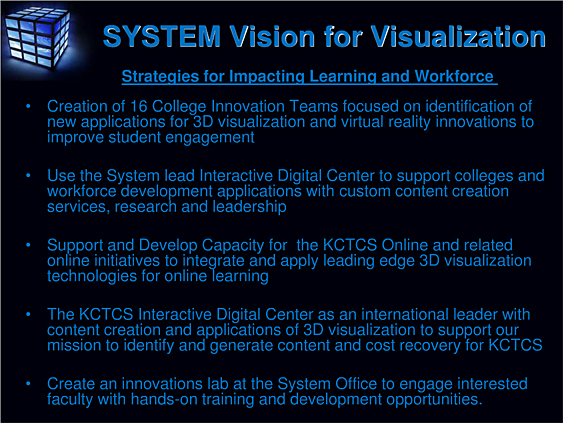..
Virtual worlds are not dead; they’re waiting — from vator.tv/news
Top researcher says tipping point for 3D immersive environments is just around the corner.
Remember SecondLife? Last we heard it had turned into a virtual wasteland, the sound of flies buzzing about empty Coca-Cola amphitheatres and abandoned Hummer showrooms, moss growing on the wings of the flying cars. But virtual worlds may be in a quiet incubation period, readying a fierce comeback. At the Virtual Edge Summit Monday, Eilif Trondsen, the Research & Program Director at Strategic Business Insights and a director at SRI for 28 years, said that 3-dimensional immersive environments could hit a tipping point in a few years, once a handful of key technologies fall into place.
From DSC:
I believe this is probably right on the mark…3D immersive environment have the potential to be very powerful, engaging mechanisms through which learning could flow. Second Life and most folks (including myself) never quite saw eye-to-eye; as it was too complex and it required too high of a learning curve. The solution(s) here need to be — as always — extremely easy-to-setup-and-use.
After Frustrations in Second Life, Colleges Look to New Virtual Worlds — from The Chronicle by Jeffrey Young
The hype is gone, but not the interest, and professors think some emerging projects may have instructional staying power










